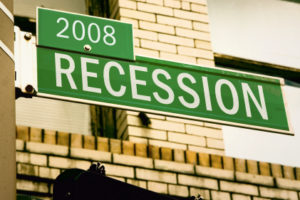President Donald Trump celebrated his first 100 days in office by attending his third “2020 presidential campaign rally” since taking office. Trump shunned Hollywood, press and media elites to spend a night with his supporters in Pennsylvania – no wonder he still enjoys 96% support among his core base.
The concept of measuring the performance of a new POTUS based on their legislative accomplishments during the first 100 days started with the tenure of President Franklin Roosevelt, who enacted 76 laws in 100 days including nine that were considered “major bills”. Of course FDR was fighting to mount a recovery from the economic disaster caused by the “Great Depression” – undoubtedly speedy relief was a high priority in 1932.
Honestly the 100 day marker is not as effective of a measuring tool in administrations with no crisis to drive movement in Congress. Trump is joined by many of his peers who also failed to pass major legislation during the first 100 days – Bush43, Clinton, Bush 41, Reagan, Carter, Nixon and LBJ.
Former President Barack Obama was the only POTUS in modern history to meet the goal, but most of his “stimulus” legislation was pre-cooked in the months before he was sworn in. The “Great Recession” was the primary driver for swift action in Congress during the early days of his administration.
Trump has still not quite found his footing when it comes to negotiating with Congress and developing consensus to accomplish “big deals”, on the campaign trail he pledged to push for a Constitutional amendment imposing terms limits on Congress – more and more Trump may be wishing that amendment already existed.
Trumpism
Trumpism began to take shape just a mere 10 months ago, but already its wreaking havoc on conventional political theory. Some don’t understand if POTUS is deploying some hidden mind control over his opponents or just genuinely doesn’t know what he is doing. Either way it’s providing for tremendous entertainment while both sides rush to comprehend the other.
I’ll have to admit that at varying times even I’m confused.
I wrote a piece on TPAC some weeks ago, which outlined my view of Trump’s brand of conservatism – but increasingly what Trump shared originally is now evolving into new positions that are often more in line with a traditional conservative view.
Trumpism called for a “deconstruction of the administrative state” and that progress appears to be continuously underway as the new administration proposes massive budget cuts to various departments, they are reassigning process controls to senior advisers and starving federal agencies of key appointments. The Office of Personnel Management reports the number of federal employees has not been this low since 1965.
During the campaign, Trump shared an “economic nationalist” message, which denounced the so-called “corporate globalists” or better known neo conservatives. Trump shared a view of foreign affairs on the campaign trail that generated mostly nonconventional and isolationist policy ideas.
Many including myself feared the new administration may shrink from the world and abdicate our role as a “super power” and global leader. President Trump’s recent military actions in Yemen, Syria and Afghanistan laid those worries to rest.
Candidate Trump had tough campaign rhetoric for China, at one time even threatening to label them a “currency manipulator, but President Trump emerged after a long weekend with President Xi Jinping at Mar-a-Largo with softened language about our international partner. He also is rightfully engaging China and requesting them to help us negotiate a peaceful resolution with North Korea.
Candidate Trump complained that NATO was “obsolete” and pledged to withdraw, but President Trump back pedaled after a face-to-face meeting with NATO Secretary General Jens Stoltenberg where he came to realize the critical role of the alliance in Europe.
Candidate Trump vowed to have South Korea pay for a missile defense system to guard against threats from the north, but a matured President Trump agreed to honor the original deal.
Executive Actions
Trump signed 24 executive orders in his first 100 days, the most executive orders of any President in modern history. Not to mention Trump signed 22 presidential memorandums, 20 presidential proclamations and 28 legislative bills.
About half of those bills rollback regulations enacted during the waning days of the Obama Administration using a blunt force tool known as the Congressional Review Act, which allows Congress to circumvent the Senate’s filibuster to repeal legislation issued in the last 60 days of the previous administration.
Most of the other legislative bills addressed simple measures – appointing personnel and modifying existing programs. Trump has not signed any major legislation.
Here are some notable actions taken during Trump’s first 100 days:
1 – Trump appointed a conservative justice, Neil Gorsuch, to the U.S. Supreme Court – first time since 1881 that a POTUS accomplished the goal in the first 100 days.
2 – Minimizing the Economic Burden of the Patient Protection and Affordable Care Act Pending Repeal (EO 13765) – Trump’s first executive order sought to fulfill part of his pledge to repeal the ACA or better known as ObamaCare.
3 – Veteran’s Access to Care through Choice, Accountability, and Transparency Act – Trump signed a bill that extended the program beyond August.
4 – Core Principles for Regulating the United States Financial System – Trump issued an Executive Order which directed the Treasury Secretary to submit a report on recommended changes to bank regulations in 120 days, as Trump seeks to make changes to the Dodd-Frank Wall Street Reform and Consumer Protection Act. He also rolled back the fiduciary rule, which stated that brokers and advisers who work with tax advantaged retirement savings “must work in the best interest of their clients” even at the expense of their own profits.
5 – Reducing Regulation and Controlling Regulatory Costs – Trump’s seventh Executive Order addressed the mounting federal regulations passed during the preceding administration.
6 – Trump also signed an Executive Order to fulfill another campaign promise – to limit lobbying of executive agency members and further restricted actual members from becoming lobbyists after leaving the federal government. 9 – Trump repealed the Stream Protection Rule and the Disclosure of Payments by Resource Extraction Issuers Rule, both measures provided additional relief to the fossil fuel industry.
7 – Trump directed the Environmental Protection Agency to review the Clean Power Plan and seek to remove the Obama-era climate change rule, not to mention rewrite key rules curbing U.S. carbon emissions and other environmental regulations. He also lifted a 14-month old ban on new coal leases on federal lands. 11 – Trump singed three Presidential Memorandums regarding construction of pipelines; two cleared the way to governmental approval of the Dakota Access and the Keystone Xl pipelines. 12 – Trump overturned the Department of Health and Human Services Title X Funding for Planned Parenthood Rule.
8 – Trump signed the Department of Labor Unemployment Insurance Drug Testing Rule, which disapprove the DOL rule relating to drug testing of unemployment compensation applicants.
9 – Trump overturned the FCC Privacy Rule relating to “Protecting the Privacy of Customers of Broadband and Other Telecommunications Services.”
10 – Trump proposed one of the most pro growth tax reform packages in modern history; reducing the number of tax brackets from seven to three, lowering the corporate tax rate, doubling the standard deduction, repealing the AMT and “death tax” along with closing most loopholes with the exception of mortgage interest and charitable deductions. He also suggested transitioning businesses to a territorial tax system and a one-time tax on repatriation of funds to encourage international corporations to move over $1 trillion into the U.S.
America First
Donald Trump is a master marketer and won millions of supporters with easy to remember catchphrases – “Make America Great Again” or “America First” – no red blooded American can resist a great rally filled with loud chanting. The earliest political campaigns in the new America often came with songs to promote candidates and others to tear down opponents.
Candidate Trump helped voters to feel like they were part of a larger movement to restore prosperity in America, so the campaign was not about casting a vote for Trump, but more so his supporters felt they were casting a vote for America.
Noticeably absent from the first 100 days were any trips farther than Florida. Other members of the executive branch ventured out into the world – Pence, Tillerson, Mattis, Kushner and even the “first daughter” Ivanka Trump. However POTUS invited world leaders to meet with him in America, a move that confused most conventional pundits, including me – but it further strengthened approval ratings among his core base of supporters.
Candidate Trump promised to withdraw from trade negotiations, rip up existing trade agreements and erect new barriers to prevent immigrants from pursuing the “American Dream”.
After three days on the job, President Trump fulfilled a campaign pledge; he signed an Executive Order withdrawing the United States from the Trans-Pacific Partnership (TPP) – a trade agreement between American and eleven Pacific Rim nations that would have created a free trade zone for about 40% of the world’s economy.
Furthermore, Trump signed additional executive orders on trade – examining forms of trade abuse, strengthening anti-dumping rules and countervailing duties. He also directed federal agencies to implement a “Buy American, Hire American” strategy that favors higher-skilled, higher-paid applicants. The latest executive order orders federal agencies to review and propose reforms to the H-1B Visa system.
Candidate Trump was highly critical of the Export-Import Bank, but President Trump reversed course after two significant meetings – one with Egyptian President Abdel Fattah el-Sisi and the other with Boeing CEO Jim McNerney. Trump nominated Scott Garrett as Head of the ExIm on April 15 and subsequently nominated board directors – breaking years-long deadlock.
Trump even threatened to rip up NAFTA, the free trade agreement with Canada and Mexico, but he softened his position after receiving calls from the presidents of both countries.
Trump set the tone of harsh immigration policies on the campaign trail and since he has taken up residency in the White House. He signed executive orders to approve travel bans, restrictions on refugees and immigrants from Muslim-majority countries, not to mention increased immigration enforcement including deportations.
Federal judges continue to block his travel ban and deportations are up modestly from the same time last year – 35,604 removals in 2017 compared to 35,255 in 2016. Still no wall at the southern border and no consensus in Congress as to how to fund the project, but Trump’s tough rhetoric do appear to be slowing the number of border crossings.
Future Outlook
The new administration still has well over 1350 days remaining in office, so plenty of time left on the clock to achieve major legislative goals – infrastructure, healthcare, budget and tax reform. President Trump’s approval rating is stubbornly trapped in a 40-42% range, the lowest of any POTUS in history at this point in their presidency, so that will create some barriers to building consensus in the highly divisive body of Congress.
Candidate Trump created self-imposed deadlines on his key domestic objectives – undoubtedly President Trump now realizes it was a rookie mistake to say, “I will repeal ObamaCare on day one,” or “I will start the process of building a wall at the southern border on day one.”
President Trump would have done much better to kickoff day one by introducing a massive infrastructure bill that provided substantial investments for the rebuilding of roads, highways, bridges, airports and schools – a grab bag of goodies would have been impossible for Democrats to ignore. Trump could have then followed-up with pro-growth tax and fiscal reforms that reduced the deficit, while increasing revenues to tackle the expanding national debt.
Trump has some other growing concerns, such as North Korea, heightened rhetoric may lead to actual conflict; not to mention shaky relations with Russia and their alliance with Syria will result in more hostile confrontations.
Donald J. Trump became the first civilian in American history to be sworn in as POTUS on January 20, 2017; his first 100 days have been filled with twists and turns as he battled a steep learning curve – but his next 100 days may be absolutely critical to watch.




